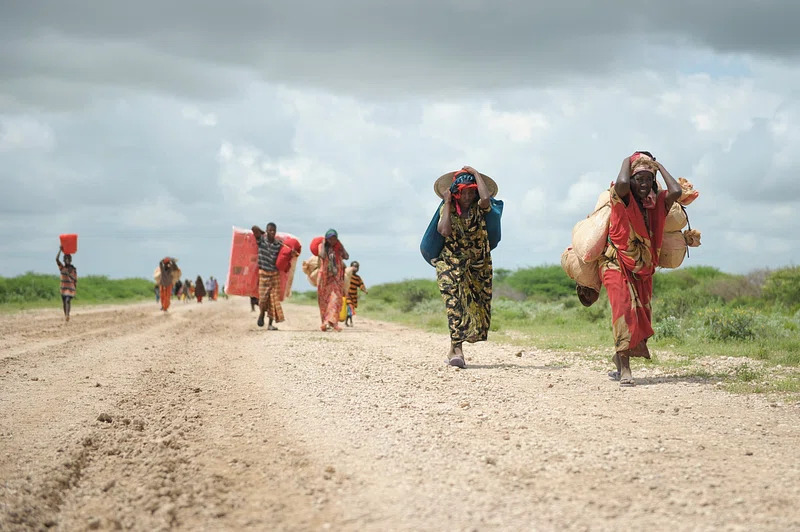This essay contends that the discipline and practice of International Relations systematically privilege symbolically potent crises over far deadlier but diffuse harms, thereby distorting both public debate and policy priorities. It argues for a recalibration of attention and resources based on preventable mortality rather than ideological resonance.
The contrast is stark. In Britain, the Office for National Statistics records 117,527 preventable or treatable deaths annually – 21% of all mortality – largely from cardiovascular disease, smoking, alcohol, and treatable cancers.¹ These losses draw little sustained public mobilisation. Elsewhere, Sudan’s protracted civil conflict has tipped more than 30 million people into acute food insecurity,² yet the crisis struggles to hold headlines or prompt sustained diplomatic engagement. By any measure of scale, both dwarf many of the events dominating international discourse.
Scale Versus Salience
Hypertension alone accounts for 10.8 million deaths each year worldwide (95 % CI 9.6–12.0),³ equivalent to over five medium-sized nation-states annually. Household air pollution from solid fuels adds another 3.2 million deaths, many among women and children.⁴ These combined tolls exceed those of all active armed conflicts in a typical year. Yet they rarely breach the news agenda except on awareness days, and they intrude into parliamentary debate even less often.
Certain crises, by contrast, fulfil criteria that make them highly “protestable.” They offer moral clarity: identifiable perpetrators, discrete victims, and harm perceived as deliberate. They provide compelling visual evidence that can be shared and amplified through mass and social media. And they align with pre‑existing identity narratives, allowing publics and policymakers to position themselves visibly on questions of justice, resistance, or defence.
By comparison, preventable deaths from hypertension, unsafe water, or indoor smoke lack these narrative hooks. Victims are geographically and socially dispersed; causal chains are complex; and responsibility is shared across markets, states, and individual behaviours. Even Sudan’s famine, clearly political in origin, lacks a single antagonist familiar to Western publics, limiting its capacity to sustain attention.
The Political Economy of Attention
Media logic amplifies this imbalance. Event‑driven coverage favours sudden, dramatic violence over slow attrition. Politicians, in turn, find conspicuous moral stands on visible, high‑profile issues to be electorally safer than committing resources to long‑term structural prevention. The result is a moral economy in which visibility, not mortality, determines priority.
In IR scholarship, this reflects the Cold War‑era distinction between “high politics” (war, diplomacy, security) and “low politics” (health, welfare, environment). That hierarchy persists even though so‑called low‑politics issues now account for far greater loss of life. Security, on any coherent definition, should be measured not only by the absence of armed invasion but by aggregate survival and human flourishing.
Toward Evidence‑Based Empathy
The corrective is not to diminish the importance of high‑profile conflicts but to broaden the moral lens. An evidence‑based empathy approach would allocate attention and resources in proportion to preventable harm, regardless of whether an issue fits prevailing ideological narratives. For policymakers, this means directing funding and diplomatic capital toward the largest, most tractable sources of mortality. For activists, it implies expanding advocacy portfolios beyond the most visible theatres. For scholars, it demands integrating public‑health and development indicators into security analysis, recognising that neglect of chronic, large‑scale mortality is itself a political act.
There are precedents. India’s Pradhan Mantri Ujjwala Yojana programme has distributed more than 80 million clean‑fuel connections,⁵ sharply reducing household air‑pollution exposure. Anti‑hypertension campaigns in Canada and Finland have driven measurable declines in stroke and heart‑disease mortality. Such initiatives may lack the drama of conflict diplomacy, but they yield far larger dividends in human life.
The call to action is therefore two‑fold: maintain engagement with acute crises, but insist with equal vigour on confronting the routine, silent killers of preventable disease and deprivation. Only by aligning moral attention with empirical harm can International Relations begin to match its normative claims with the arithmetic of human survival.
References
- Office for National Statistics, Avoidable Mortality in England and Wales: 2023 (Statistical Bulletin, 28 April 2025), table 2, https://www.ons.gov.uk/peoplepopulationandcommunity/healthandsocialcare/causesofdeath/bulletins/avoidablemortalityinenglandandwales/2023.
- Norwegian Refugee Council, “Sudan: Two Years of War, Starvation & Global Failure, the World Must Act Now,” press release, 10 April 2025, https://www.nrc.no/news/2025/april/joint-statement—two-years-of-war-starvation-and-global-failure-the-world-must-act-now-for-sudan.
- World Health Organization, World Health Statistics 2024: Monitoring Health for the SDGs, Sustainable Development Goals (Geneva: WHO, 2024), 73.
- World Health Organization, “Household Air Pollution and Health,” Fact Sheet, 16 October 2024, https://www.who.int/news-room/fact-sheets/detail/household-air-pollution-and-health.
- Government of India, Ministry of Petroleum and Natural Gas, Pradhan Mantri Ujjwala Yojana (PMUY) Progress Report 2024, https://www.pmuy.gov.in.

